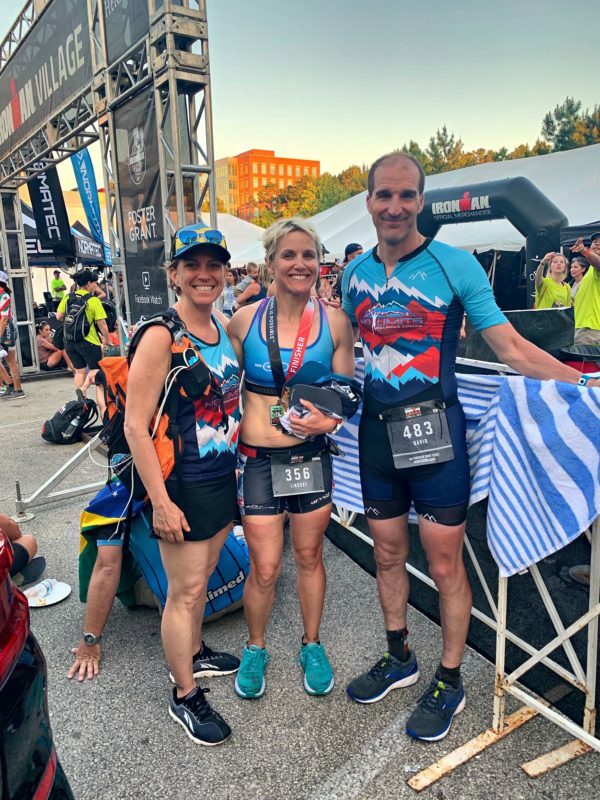“Endurance is the struggle to continue against a mounting desire to stop.” ~Alex Hutchinson, Endure
We all have big dreams when we race. Unfortunately, Ironman Texas did not turn out to be the day of my dreams. The more races you do, the more likely it becomes that you’ll have a bad one (or two or three). With Ironman Texas, I raced my 12th ironman.
Nope, they just do not get any easier.
Here is my Ironman Texas Race Report.
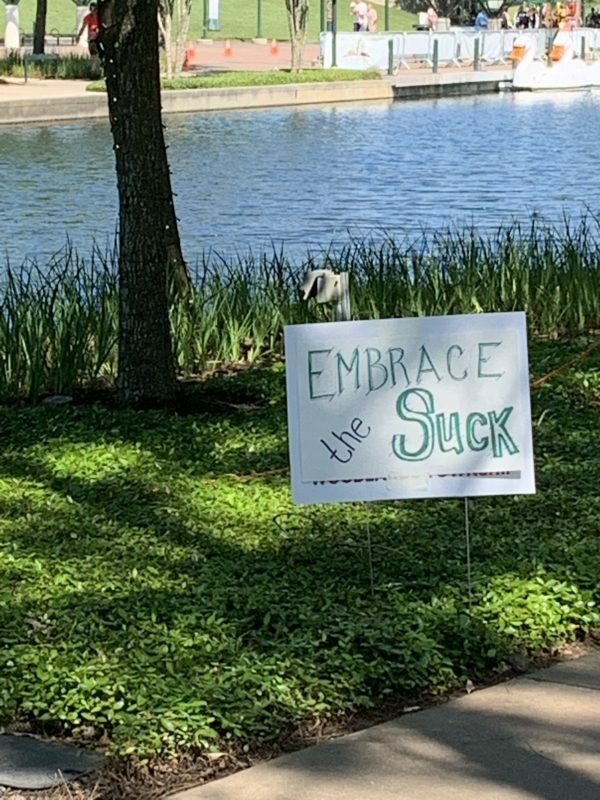
In October, Coach Maria and I decided on Ironman Texas, following a strong race at Ironman Maryland. We wanted one more crack at a Kona slot for 2019.
IMTX is the 2019 North American Championships and was likely to have 4 slots in my age group (which normally has only 2). The race is flat, with a challenging swim (because it gets especially bumpy in the canal). These characteristics suit my strengths, so it seemed to be a good choice.
Given the competing demands of life, my ironman build was not ideal. My husband and I moved to a great house and neighborhood, but the process was incredibly exhausting and stressful–and all during the key build weeks of training. The added stress of life plus training led to five colds, including one that turned into a nasty sinus infection during our move. And, I can’t forget the bonus stomach bug. To allow for recovery, I missed some key training, which frustrated me.
Needless to say, I’ve had much better Ironman builds. As age group athletes, who balance work, training, and family life, we know that we are not in complete control of our schedules. It’s no different for coaches!
But, I put in a solid few months leading up to IMTX, so I still had hope. As we like to emphasize at No Limits: Don’t Stop Believing!
Pre-race
I flew into Houston on Wednesday before the Saturday race, checked into my hotel, Best Western Plus about 4 miles from the race site ($120/night vs. $300/night if you stay at the race venue), unpacked my bike and got it back together mostly by myself (yeah!) with some help from the awesome folks at Bikeland. Then, I hit Mod Pizza for dinner (yum!)
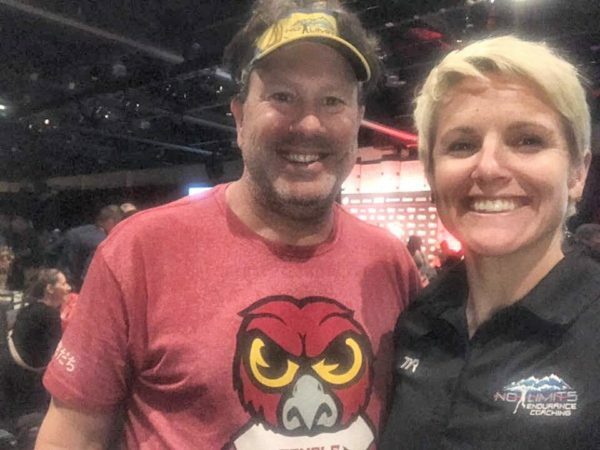
On Thursday, I checked in and went for a quick bike ride around the race site, which I learned is very congested and not easy or very safe to bike around. I took a quick shake out run along the run course, which was fun. I then attended the race meeting and banquet with fellow No Limits athlete, Joe Geromini, who was doing his first Ironman. IMTX is one of the only races to still hold the pre-race banquet. I love these things! They are hosted by Mike Reilly, and they get you psyched up and in the right frame of mind for the race.
On Friday, I did a quick practice swim with fellow No Limits athlete Dave Couture, and then checked in my bike and gear bags and headed back to the hotel to relax for the afternoon. Coach Maria arrived around 4:30pm and we went to Buca de Beppo for dinner for some carb loading.
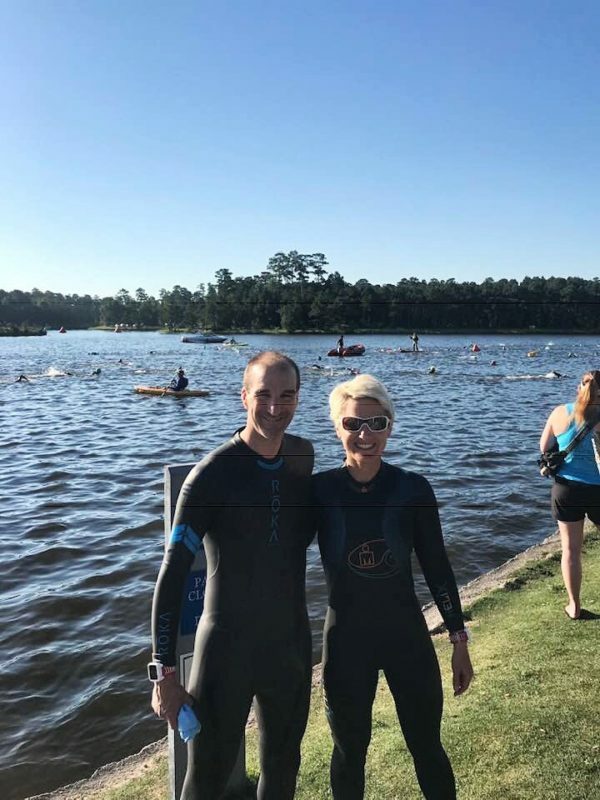
Saturday morning our alarm went off at 4:20 a.m. and we got to the race site by 4:50 a.m. We found great parking and everything went super smoothly to start! After finishing the final preparation in transition, Maria and I headed to the swim start, which is about a mile walk from transition since it’s a point to point swim. I was feeling good and ready to rumble!
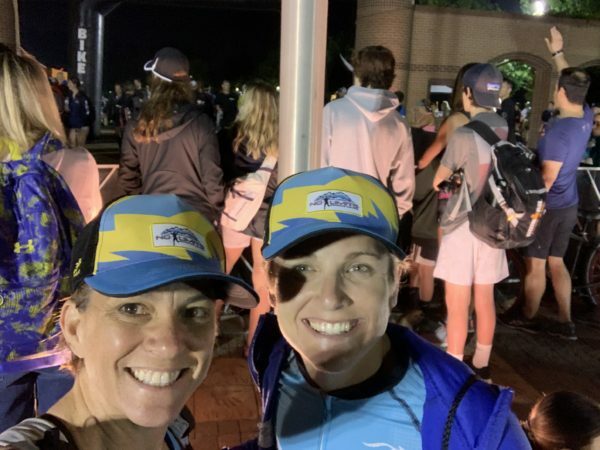
Swim (2.4 miles)
IMTX is a rolling swim start. I lined up with the sub-hour group and was probably the 4th group of 4 people to take off. I enjoyed the swim a lot – it was nice to do a one loop swim rather than 2 loops as is the case with many other races. To start, you run into the canal and can quickly start swimming. The water is dark, but no darker than the Choptank at IMMD or the Atlantic City Bay (for those that have done Ironman Atlantic City 70.3, or Challenge Full back in the day!).
You head out in a mostly straight line for about .8 miles, turn and head back for about .8 miles, then make a right turn into the canal for the final .8 miles which takes you to the swim finish and transition.
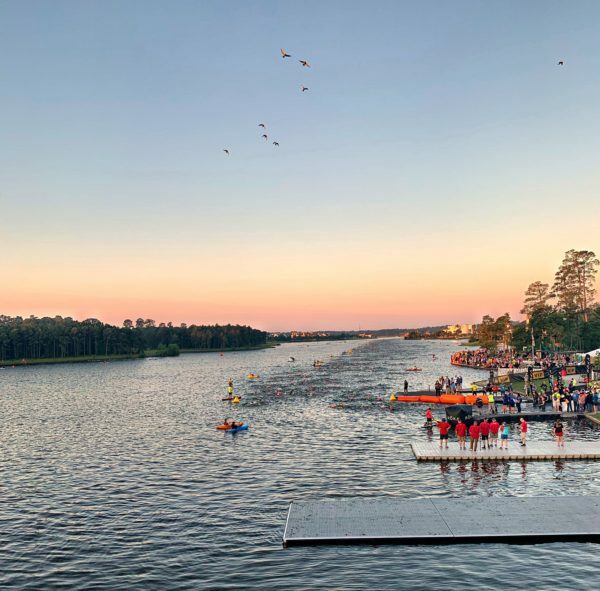
The sun was in our eyes as we made the turn into the canal but the trees blocked it once we were in the canal, so sighting was not a problem. The canal lived up to its reputation of being a “washing machine”. It was crowded and narrow and I kept getting pushed towards the wall rather than being on the buoy line so I just gave in and stayed there. I finished the swim in 1:01. I was hoping for sub-hour, but this is a great time on any day. I was ready to switch to the bike!
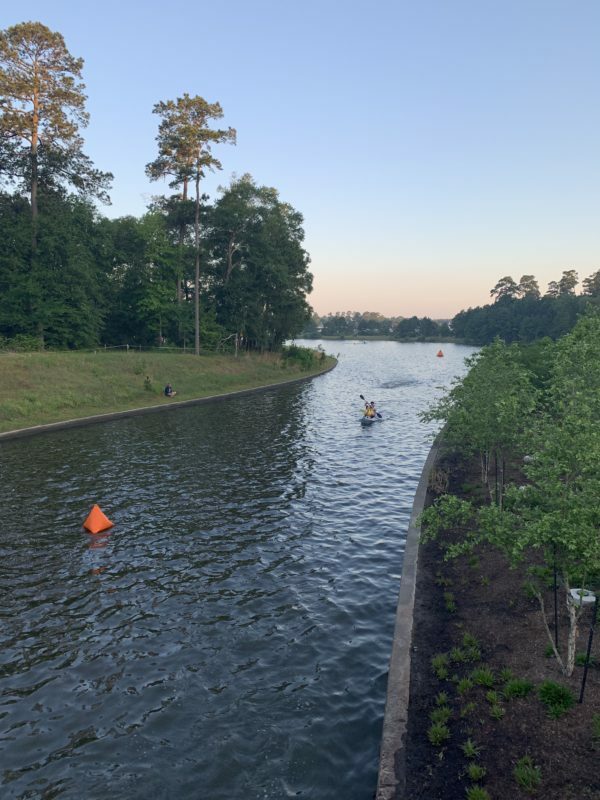
Bike (112 miles)
I quickly moved through transition and headed out on my bike. I noticed right away that my power wasn’t displaying on my watch, so I went into the settings and hit “find” on my watch, but still no power. I tried that one more time with no luck so I gave up and assured myself it’d be ok to just use RPE (rate of perceived exertion) and heart rate. When race day comes, it brings problems that need to be solved. While I freaked out a little bit inside, I knew that the show must go on! (Side note: this is why it is important to always understand your RPE in training!)
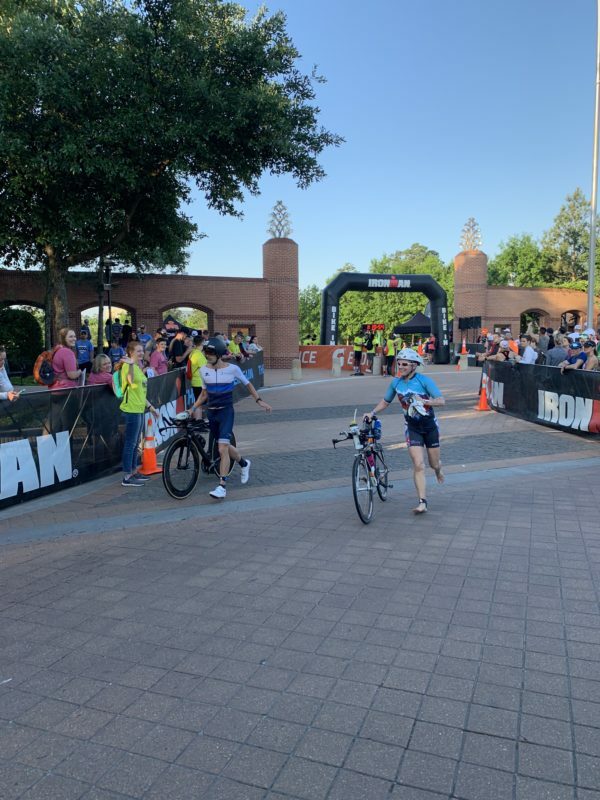
Power helps me keep my effort in check, especially on the first half of the bike when I’m feeling fresh. I have a history of flying and dying. Luckily, my power did come back on after about 30 minutes (not sure what the problem was!).
The reports I’ve read on IMTX have focused on how fast the bike course is, so I was expecting a PR bike time. There are lots of turns through town in the first 15 miles of the bike so it didn’t start out very fast, and I was noticing the wind in sections. I was ready to get to the “super fast” highway.
Once we turned onto the highway I thought, “Alright, here we go, time to fly!”
And then: BOOM! 💥 I was hit by a crazy headwind, sustained 20-25mph, with 30+mph gusts.
I thought: Ok, it’s ok, it’s not going to last forever, maybe we’ll change directions a bit and have a little crosswind instead. No such luck. It was pretty much straight on headwind for the 20 miles heading out on the highway.
The good news is there were plenty of motorcycles out on the course this year (unlike last year) giving out penalties to athletes drafting. I witnessed officials give some penalties to two big groups and one smaller group. So, it seemed to be a more fair course this year.
Once we turned around to head back: Weeeee!!!The tailwind was a lot of fun to fly so fast. But it was hard not to think about the second loop and heading back into that dreadful headwind.
I made the turn to head back out on my second loop and the wind felt harder with some fatigue in my legs. And IMTX is not completely flat like I had believed. There are a good number of bridges and overpasses which add up to over 1000 ft of gain over the 112 miles. Of course, this isn’t much, but into the headwind some of those hills felt like mountains!
The second loop was a long 20 miles back out into the wind, so I tried my best to focus on my power and effort and tuck in aero. But, the mental challenge proved difficult, as I pushed my target watts (and higher!), yet at times, I moved 10mph. The wind conditions definitely felt Kona-like.
Relief washed over me, as I hit the turnaround for the last time. I felt pretty uncomfortable by now. My feet were hurting a lot, I didn’t feel great in aero, and on and on. Yet, I couldn’t give in. Now was time to endure. I finished the bike in 5:48, well off my 5:20 goal time, but I figured everyone was probably slower into the wind.
Run (26.2 miles)
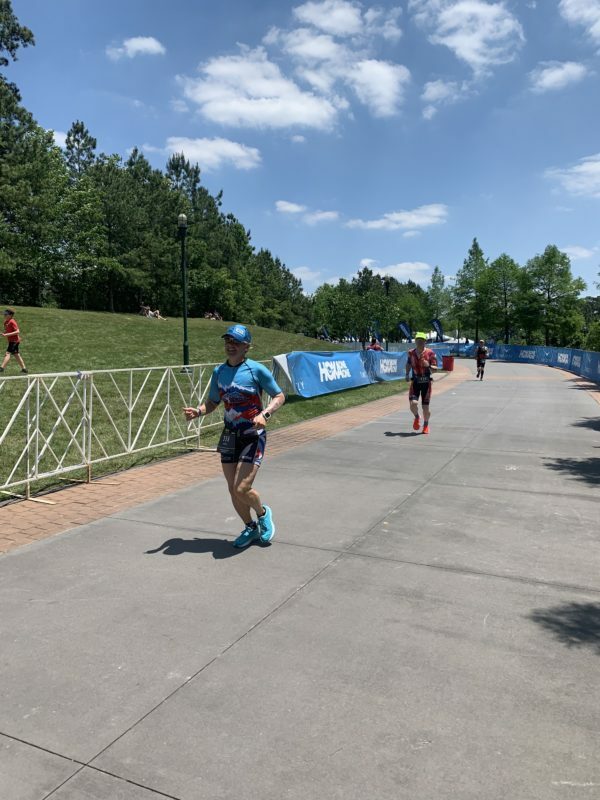
I hit transition and handed off my bike and oomph…my legs didn’t feel so good, and my feet felt awful. We had a long run through transition on the concrete that my bare feet didn’t like. These were the first signs of trouble for the run but often times you feel lousy the first mile of a transition run and the legs come around so I wasn’t worried.
I had a quick transition and took off on the run. I saw Maria, and she said I was in 7th but only 4 minutes down from 4th place. She assured me that the podium and a Kona slot was in reach if I could run strong. My legs didn’t feel good but I kept faith they’d come around. I told myself to just relax and let the run come to me.
“Easy, light, smooth and fast” is one of my favorite running mantras and I repeated it several times.
Well, unfortunately there was nothing easy about that run. My legs just never came around. I think a combination of mashing too high of gear into the head wind, and pitching the effort a bit too high fried my legs for the run. My run went in waves of feeling bad to mediocre to bad, but never good.
Then, my stomach started going south, so I backed off my clif bloks for a bit and stuck to cola and water, but my bit turned into too many miles. I got low on calories and struggled to pick my feet up to keep running on the third loop and it turned into a trot/power hike at times. I started forcing more bloks in and managed to come around and be able to run (slowly) the last 5k. I finished the run in 5:20, with a total time of 12:18. One of my slowest ironmans, but also one of my grittiest.
The 100 mile mindset helped me get through this marathon, I was telling myself my legs and feet didn’t hurt any worse than during the 100 last year.
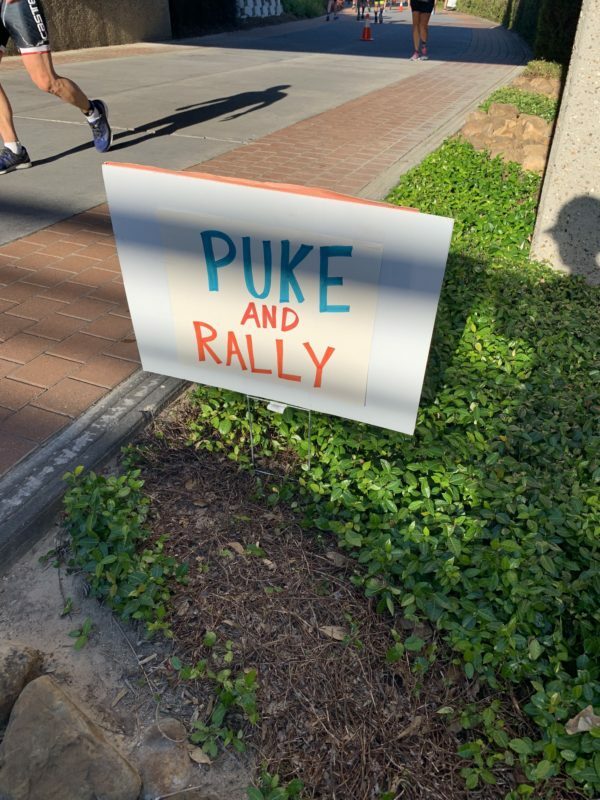
SUCK IT UP!
The 100 mile serves as my barometer for all pain and duration of events. And this was good training for the VT 100 miler I have coming up in July. I reminded myself of that regularly during the marathon sufferfest.
I am proud of myself for digging deep and gutting out the run when the voices were strong, telling me to walk and quit when my goals became out of reach. Of course, I am disappointed, but as with all races there are lessons to be learned.
I will never lose sight of how lucky I am to get to do this incredible sport and to have this healthy, strong body that allows me to push the limits. I am also grateful for my tribe of people who support me in training and racing, without them I could not do this.
Onward!
